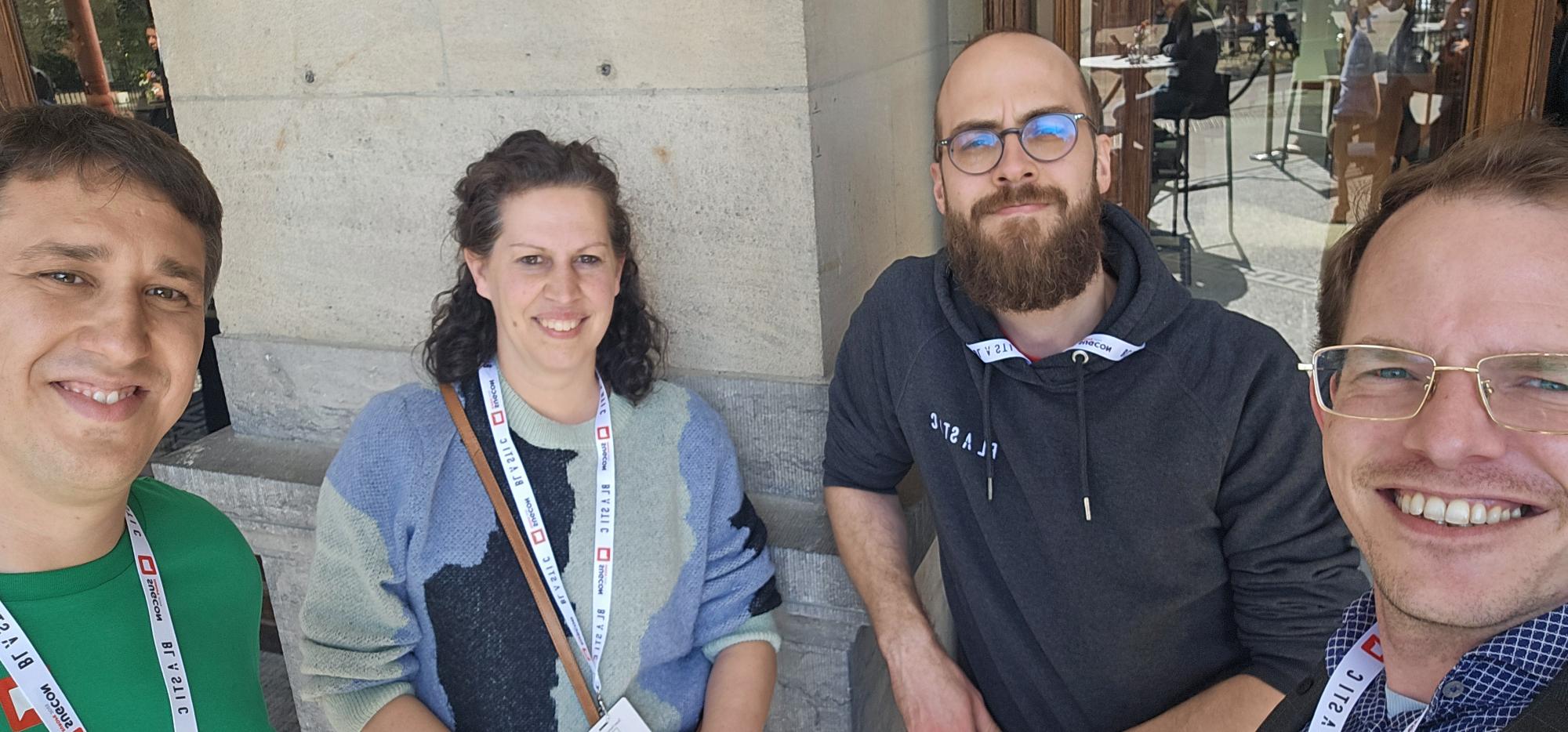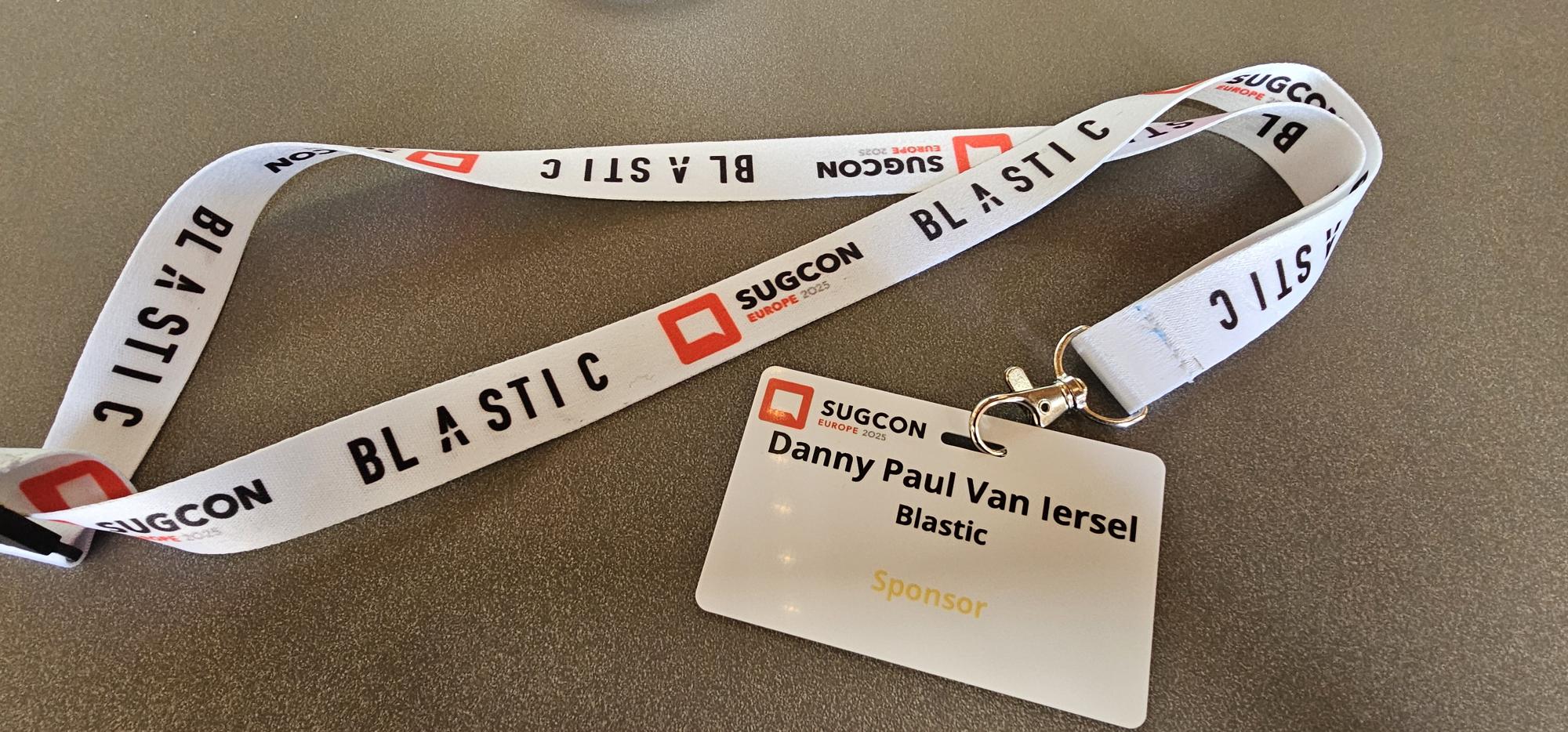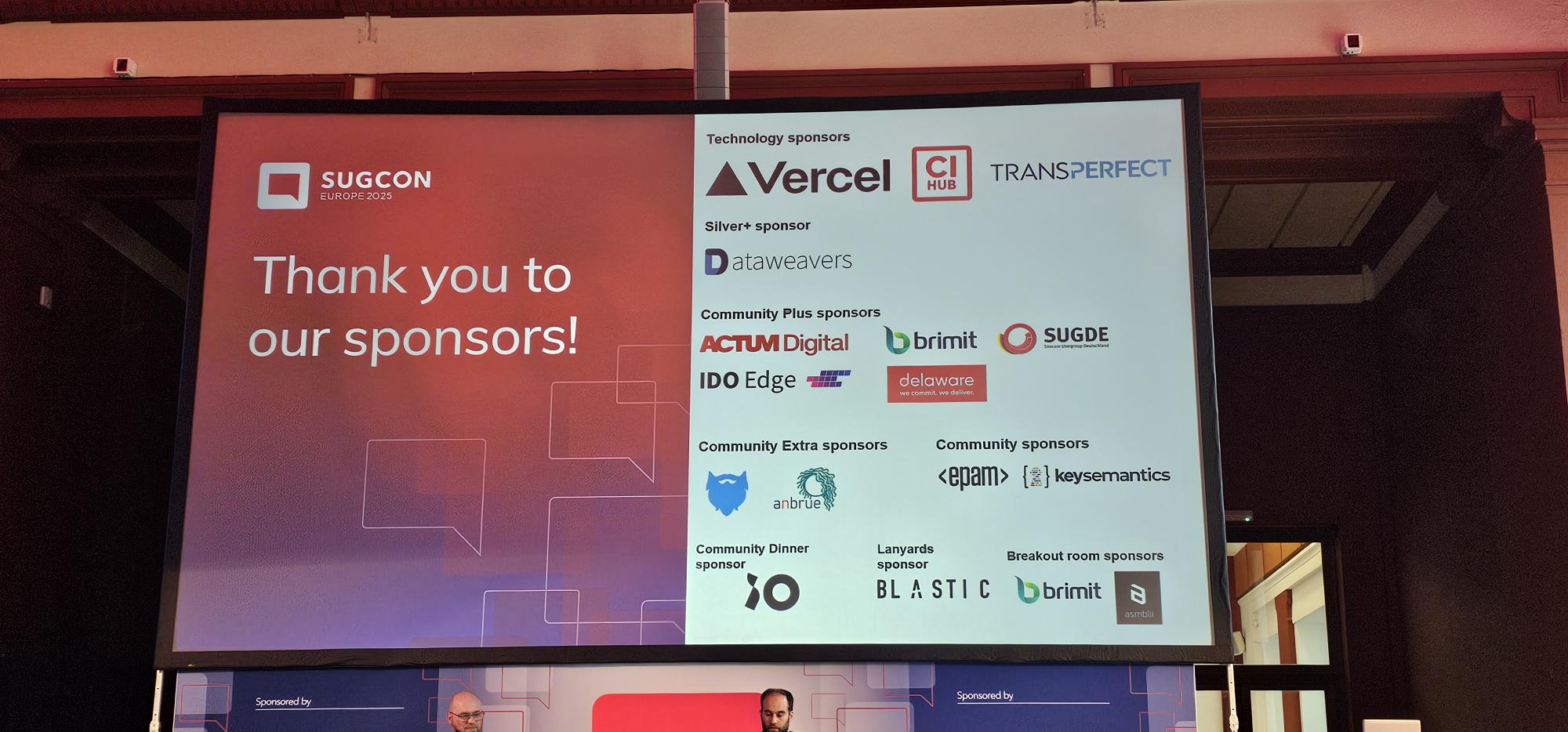By Danny Paul Van Iersel, 25-04-2025
Last week, I had the opportunity to attend SUGCON Europe in Antwerp, Belgium. SUGCON is the annual gathering for the Sitecore community, where professionals come together to explore the latest developments, share insights, and discuss the future of Sitecore's product and service offerings. As someone who has worked with Sitecore but also engages with other DXP and CMS systems, I was curious to see how the event would unfold from a broader perspective.
Upon arrival, I was met with pleasant spring weather and a warm welcome from the event hosts. The organisation was seamless, and the atmosphere was inviting. A notable detail: Blastic sponsored the lanyards!
It had been some time since my last SUGCON experience - London 2019, to be precise. While I had followed Sitecore's transformation from a distance, my direct experience remained with XM/XP SC10.x setups, without extensive exposure to newer developments like SXA, JSS, or XM Cloud. That said, I made sure to stay informed about these advancements, making this event a great opportunity to gain firsthand insights.
Get in touch
Ready to take your digital experience to the next level? Feel free to contact us to learn more about our services and how we can help you leverage the full potential of your digital marketing.
Key Takeaways
As expected, my primary focus was on the technical and developmental aspects of Sitecore, so my observations lean toward those areas.

AI Integration
A prominent theme at SUGCON 2025 was Sitecore's significant investment in AI, particularly through Sitecore Stream. The keynote and various sessions highlighted how AI is being leveraged to enhance content generation, A/B testing, and overall content strategy.
Key upcoming features of Sitecore Stream include:
- AI-powered translations
- Automated content scaffolding
- Content auditing for brand alignment
- AI-generated component creation
The integration of these features within Sitecore's ecosystem appears well-thought-out, ant it will be interesting to see how they perform in real-world applications. While these capabilities add significant value, they come at an additional cost. The question remains whether business, especially those operating within budget-conscious markets, will find the investment worthwhile.

On-Premise Support vs. Cloud Adoption
Sitecore reaffirmed its commitment to supporting on-premise XM/XP solutions for the foreseeable future. However, the broader emphasis of the event suggested that new innovations are primarily geared toward XM Cloud, with on-premise support following later.
For organisations with existing Sitecore infrastructure, transitioning to XM Cloud requires substantial investment. While the benefits of a fully managed PaaS solution are evident, the decision to migrate depends on specific business needs and constraints. A particularly insightful session by Andy Cohen provided a candid overview of XM Cloud's advantages and limitations, underscoring the importance of understanding the platform's nuances before making the shift.
Sitecore XM Cloud Content - A Headless Approach
One of the more intriguing announcements was Sitecore's development of a new headless product: Sitecore XM Cloud Content. This API-first approach aims to streamline content modelling, publishing, and delivery across multiple channels, utilizing, GraphQL for seamless integration with modern front-end frameworks.
The potential for increased flexibility and efficiency is promising, particularly for developers who prioritize headless architectures. However, as with other enterprise solutions, the pricing model will be a key factor in its adaption, especially given the competitive landscape of headless CMS offerings.
Sitecore in real life
To whom might read this, you are most likely a user of Sitecore or a developer. Have you ever wondered if the issues you face only apply to your own solutions?
With some great sessions from Andy Cohen (used to work at Sitecore, but not anymore), he gave some insights of a client who has a very large content structure.
Publishing 1000+ pages at a time caused issues, slowness in publishing (sometimes up to 6 hours). Building solution gave errors, taking a very long time before a build was finished. Sudden loss of content in the website.
The good part, all issues are fixable. While most parts have already been fixed (mostly with configurations or finetuning the actual solution), it still shows that many projects are difficult and there is not always 1 solution for all. It gives great insight into how other projects work and to know what common issues are and that they can make your new project a lot better. The publishing issue is still on going, but tighter with Sitecore a lot of people are working on this to get it solved.

Piers Matthews, his presentation is probably one of the favourites among developers. Title of his presentation: "Securing, Operating, and surviving Enterprise Demands." Absolute great pointers on his solution and how to benefit from a great architecture setup.
Securing your environment (against potential threats). Leverage scalability and optimize SLA. Considerations:
- Single Region Zonal Redundancy - availability 99.95%
- Multi Region (active/passive) - availability 99.95%
- RTO (Recovery Time Objective) - between 15 minutes and 1 hour
- Multi Region (active/active) - availability 99.99%
- RTO (Recovery Time Objective) - less than 5 minutes
Thinking about deployments, how will you update your environment, include hot fixes or patches. Don't forget to have a Disaster Recovery Plan, be able to roll back.
The Sitecore Marketplace
An upcoming addition to the Sitecore ecosystem is the Sitecore Marketplace, designed to facilitate the distribution and installation of Sitecore customisations. Currently in beta, the marketplace is primarily focused on XM Cloud but may expand to on-premise installations in the future. Sitecore Content Hub is also expected to have its own marketplace, with ongoing discussions about community involvement to populate it with useful tools.
But what about the cost?
The cost remains a difficult subject. While clients always want to know upfront what it is going to cost them. There are many variables that would make a solution complete. Think about what products need to be used. Each product had different measurement to scale in a tier. Some use visites as reference, other use connection or storage.
It takes many sessions to clear out what is needed and another set to see with Sitecore regarding actual prices. This is only for the product selection. After that has been settled there will be a development needed to fit your solution into these products.
Most of the products of Sitecore that you buy contain a form of AI up to a certain point. There are additional features that can be done with it, but that would mean to pay an extra amount for these AI services.

Additional Observations
While AI was a central theme, it was also frequently featured in presentation visuals. While AI-generated images can enhance slides, their ubiquitous presence made them somewhat repetitive. A balance between text and visuals can sometimes be more effective.
On a lighter note, a minor logistical observation: the availability of snacks, particularly donuts could have been more consistent throughout the event. A small detail, but one that didn't go unnoticed!
Looking Ahead
SUGCON 2025 provided valuable insights into the direction Sitecore is taking, particularly regarding AI integration, cloud adoption, and headless capabilities. While some questions remain regarding pricing and implementation, the event successfully showcased the evolution of Sitecore's offerings.
Overall, it was an engaging and informative experience, and I look forward to seeing how these developments unfold leading up to SUGCON 2026.

Tell us about your project
And we'll come up with a tailor-made solution
Get in touch with one of our consultants to find the perfect match that fits your needs and enables you to grow.